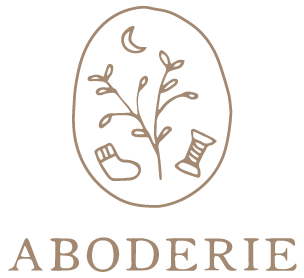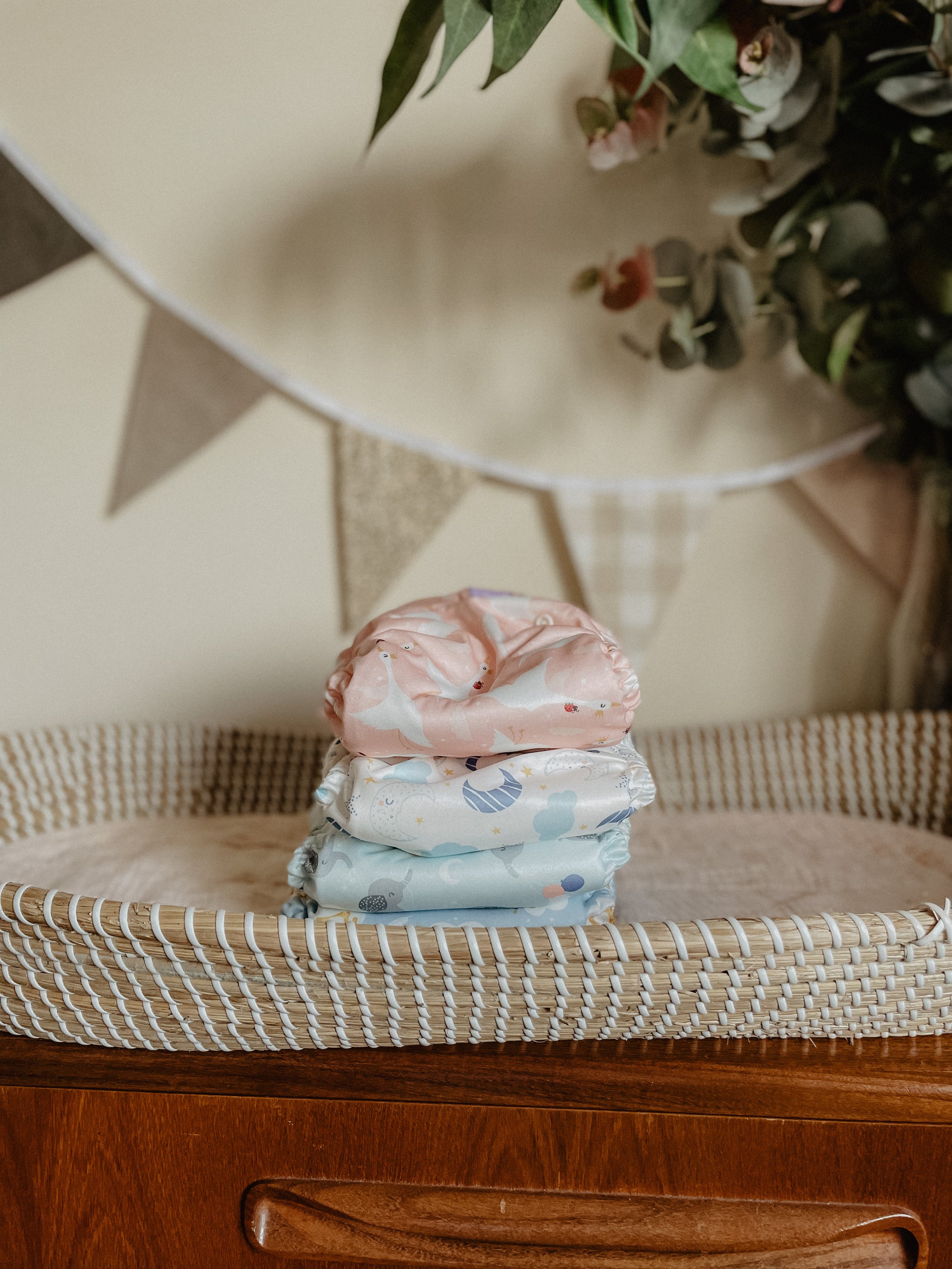The Complete Guide to Wool Nappy Covers
There is something singularly wonderful about wool nappy covers. Soft, cosy, natural - they’re about as gentle as nappies can be. I first started using wool a year ago, and since then wool wraps have become one of my most favourite things we own for our little ones. They embody how I want raise my children - with a connection to the natural world, that protects and nurtures them.
You might be among those who think wool covers are confusing or difficult to use. You’re certainly not alone! I’ve taken the time to answer all of your questions here. My hope is that you will feel confident to give this magical fibre a go with your own littles. And if there’s anything I haven’t answered, as ever my inbox is always open on Instagram - I would so love to hear from you.
How do wool wraps work?
When wool is processed for clothing, it’s stripped of its natural oil, known as lanolin. Lanolin makes the wool water resistant, which is what keeps little sheep dry when it rains! Wool wraps are made of 100% wool which is then re-lanolised to make it water resistant. The wool repels the moisture from a fitted or flat nappy underneath, keeping your baby’s clothes dry. In reality wool isn’t actually completely waterproof (in fact neither is any nappy cover!) but it’s water resistant enough to work beautifully over nappies.
Wool is also breathable - usually more so than polyurethane laminate (PUL), which is the plastic that most nappy covers are made of. This means that not only is moisture being repelled back into the nappy, but some of it is able to evaporate through the cover during wear. This means that baby feels a little drier than with a PUL cover, and their skin is more able to breathe. It does also mean that it’s important to put loose, natural and breathable clothing over the top of a wool wrap, so that the cover isn’t stifled and moisture can easily evaporate. Cotton, wool and linen will all work perfectly.
Note that wool wraps are sometimes also known as wool soakers, for historic reasons that I won’t bore you with.
What are the benefits of wool nappy covers?
There are so many benefits to wool! Here are just a few:
It’s biodegradable - compared to PUL nappy covers, which will stick around for hundreds of years, once disposed of, wool will biodegrade in a matter of months.
It’s natural - if you’re concerned about using synthetic products on your baby, then wool is the best option for a nappy cover
It’s plastic free - there isn’t (as far as I’m aware) any other plastic-free nappy option.
It’s breathable - wool allows moisture to evaporate out of the nappy, keeping little bottoms drier and fresher
You don’t need to wash it much - in fact, as little as once every couple of months! I promise this is hygienic. Lanolised wool is antibacterial, so as long as they aren’t soiled, you can leave your wool nappy wraps out to air between uses. More on how to wash them further down...
It’s thermoregulating - whereas PUL will tend to feel hot and sticky in summer, wool will keep baby warm in winter and cool in summer.
What are the drawbacks?
The main drawback is that wool is not vegan, so if you’ve chosen a vegan lifestyle then sadly it’s not an option. While I eat a plant-based diet, wool nappy covers are one of the reasons I’m not fully vegan. I find the benefits of wool for my children outweigh my desire to be ‘officially’ vegan, but of course that decision will be personal to each family.
There are also potential ethical issues with the production of some wool. The controversial practice of ‘mulesing’ sheep is relatively uncommon in much of the world now. But as with any purchase, I would recommend doing plenty of research on the sourcing and production of your wool covers.
Save for a few styles of wool nappy cover, most are quite bulky, so if you’re looking for something slim fitting then you’d be better off going for a PUL cover. Having said that, a wool nappy cover can actually be one and the same as their clothing - wool ‘longies’ are wool trousers that act as both nappy cover and trousers. In this case of course bulk isn’t an issue for fitting clothing over the top!
One thing to mention is that people tend to be put off by the fear of lanolising the covers, but anyone who has tried it knows it’s incredibly easy! I’ve added step-by-step instructions below, but the idea of it is certainly more scary than the reality, so I’d encourage you to give it a go.
I can’t knit or sew, can I buy a wool wrap ready made?
Yes! There are many, many different options out there to buy. Disana is probably the best known brand here in the UK. We have some of their pull up wraps that work wonderfully. They also make 100% merino wool longies that we love because they’re warm, comfortable and breathable, and you don’t have to fit another layer of clothing over the top of a bulky nappy cover.
Another brand that is easy to find in the UK is Anavy. They make a variety of different styles in wool, including one that is a neat fitting popper closure cover that is less bulky under clothing than pull-up styles.
There are also a number of small work-at-home businesses that make or knit bespoke covers. Alison at Little Pants specialises in these and would be my first port of call if I couldn’t make my own.
Other brands that are less common in the UK but still excellent are Sloomb and Petit Lulu.
How easy are wool nappy covers to make?
If you’re handy with knitting needles or a sewing machine, wool wraps are very easy to make. Even if you’re a relative beginner, they can make an excellent third or fourth project once you’re comfortable with the basics.
There are two ways you can make wool wraps. The most common is to knit them, but it is also possible to sew one from wool fabric.
If you’d like more information on wool covers you can watch this Q&A over on Instagram.
Where can I find a wool wrap pattern?
My favourite knitting patterns are those by Little Pants. They’re tried and tested, easy for beginners, and very reliable. There are also plenty of patterns available on Ravelry and Pinterest - you may find they are listed as wool soakers.
Similarly a quick Google search will give you plenty of sewing patterns. I personally haven’t sewn one so can’t vouch for a particular pattern, but as long as you make it big enough you should be fine!
What wool should I use to make my nappy cover?
You can use any wool you like as long as it is 100% wool and not superwash treated (which just means it’s been treated so you can wash it in the washing machine). If a wool is treated with superwash, it will usually be stated in the description. My favourites are West Yorkshire Spinners’ The Croft and Cascade 220.
You can also use alpaca, which is more affordable than wool but a little less hardy. If you’re unsure whether wool wraps are for you, then you could always try an alpaca one first and then invest in wool when you’re ready.
How do I wash my wool nappy covers? How often do they need to be washed?
One of the wonderful benefits of lanolised wool is that it is naturally antibacterial and can be washed infrequently. When you first make or buy your wool nappy cover, you’ll likely need to wash and lanolise it more often, but after 3 or 4 washes you should only need to wash it every couple of months.
When you remove the nappy cover after little one has worn out, you can leave it out to air. After a day or so, it will smell beautifully fresh again. If it doesn’t, you know that it’s time to wash your cover (and re-lanolise it).
To wash your wool cover, fill a large bowl with lukewarm water (it should feel about body temperature) and add the right amount of a dedicated wool detergent per the package. My absolute favourite wool detergent is by Clothes Doctor. Leave it to soak for half an hour then *gently* squeeze it a few times. Make sure not to rub, as this can cause the wool fibres to felt. Once it’s lovely and clean, lift it from the water but don’t dry it yet - it’s time to lanolise!
How do I lanolise my wool wraps?
Lanolising your wool nappy covers can seem scary, but I promise it’s really easy! You’ll need some lanolin - my favourite is solid lanolin. These instructions are for one cover - scale up the amounts for multiple covers!
Place a pea-sized amount of solid lanolin in a mug. Add a teaspoon of wool detergent or baby shampoo and top up with boiling water. Stir the mixture until it turns milky white - this means the lanolin has emulsified.
Pour the contents of the mug into a large bowl big enough to hold your wool nappy cover, and fill the bowl with lukewarm water. Check that the water is around body temperature before putting your cover in.
Place your cover in the water and gently squeeze it a few times to work the lanolin in. Don’t rub! Then leave it in the lanolin water for at least 30 minutes, up to overnight.
Remove your cover from the water and lay it between two microfibre cloths or towels. Roll into a sausage shape and gently press down to squeeze the water out of the cover.
Lay flat, reshape and leave to dry.
This page contains affiliate links, which earn me a little bit of commission if you make a purchase, at no additional cost to you. Thank you!














